Clean Energy Picture Dramatically Changed For Midwest, As U.S. Fossil Energy Boom Gathers Steam
With the price of natural gas falling, investments in water-sipping wind and solar energy are slipping.
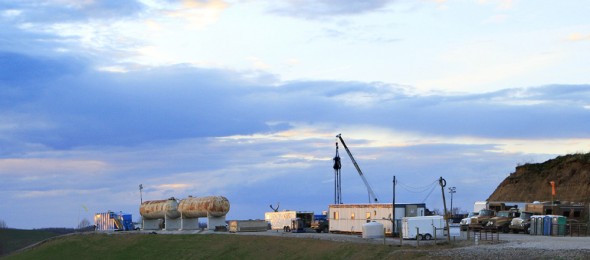
By Jacob Wheeler and Keith Schneider
Circle of Blue
It was not very long ago that clean energy production — and the development of a manufacturing sector to support it — represented a cogent business plan for Ohio, Michigan, and other Great Lakes states interested in developing new jobs, reducing stresses on water quality and supply, and contributing answers to climate change and national security.
Before the inauguration in January 2009, President-elect Barack Obama visited Cardinal Fastener, a company that manufactures specialty bolts for wind turbines in Bedford Heights, just outside Cleveland, and touted the company as a model of the future. A year later, the White House commended the solar cell manufacturing sector that was developing in Michigan.
“It’s happening all across America right now,” Obama said at Cardinal Fastener, speaking of the rise in clean energy production, a good bit fostered by $US 100 billion contained in the $US 787 billion federal stimulus bill, enacted in February 2009, and a federal production tax credit for wind power. “It’s providing alternatives to foreign oil now. It can create millions of additional jobs and entire new industries, if we act right now.”
What a difference a few years make.
The president’s energy goals — like the Midwest’s — now reflect a convergence of new oil- and gas-drilling technology, global market demand for fossil fuels, domestic politics (“drill, baby, drill”), and national policy that has elevated fossil fuel production to a top economic priority and weakened the glow of water-sipping clean energy alternatives.
President Obama now talks about an “all-of-the-above” energy strategy, as he did in January during the State of the Union, when he hailed the fossil fuel sector for generating more natural gas than ever before and for relying “less on foreign oil than in any of the past 16 years.”
Diverging Trends In Energy
New regulations — proposed just two weeks ago by the Environmental Protection Agency (EPA) — to limit climate-changing emissions are prompting utilities to close coal-fired power plants. And, though the horizontal drilling and hydrofracturing (fracking) practices have stirred concerns within the EPA in regard to water pollution and supply, the production of “cleaner-burning” natural gas is rising in Pennsylvania and Ohio, as it is in 10 more states across the country.
— Professor Mark Partridge
Ohio State University
In essence, more natural gas means a lower market price for those utilities looking to make the switch from coal. But plummeting prices for natural gas, along with uncertainty in state and federal support for alternative energy production, have caused disruptions in the clean energy sector.
Manufacturers of wind and solar energy components are going bankrupt in the two states, while a number of big wind farm proposals in the Midwest remain static. The result for the Great Lakes, and the states that surround them, is slower development of the clean energy sector and the perpetuation — for at least another generation, and likely two — of the region’s fossil-fueled economy, specifically the massive oil and natural gas reserves locked in deep shale formations.
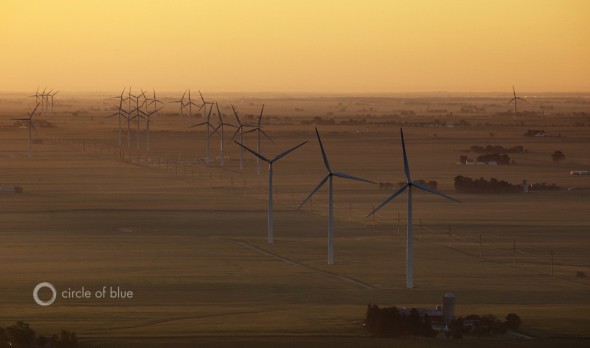
“This wasn’t what we were expecting,” said Trent Dougherty, staff attorney and director of legal affairs at Ohio Environmental Council, a statewide group based in Columbus. “Things are changing so fast in the energy field here. We’re trying to understand all of the new conditions and issues.”
Ohio At Ground Zero
In the geography of Ohio’s energy sector, the contrast between the boom in the fossil fuel industry and the sagging fortunes of clean energy manufacturing is perhaps most striking. There are deep shale formations beneath 44,000 square kilometers (17,000 square miles) of eastern and central Ohio. The Marcellus Shale alone contains trillions of recoverable feet of natural gas, say geologists in state government.
Thus, the foreseeable future of the state where Standard Oil was founded in 1870 is about the old fuels — regardless of the new ways they are attained.
— Eric Burkland
Ohio Manufacturers’ Association
“We forecasted that high prices would drive innovation in renewables,” said Ohio State University economist Mark Partridge in an interview with Circle of Blue. “Lots of business investors took a short-term view and banked on renewables. But they didn’t think about new innovations like fracking. The price of natural gas is low right now and will continue to fall.”
Back in 2008, Ohio approved a renewable energy law that required utilities to purchase 25 percent of their power by 2025 from renewable and advanced energy sources. In 2010, the Environmental Law and Policy Center of the Midwest (ELPC), a Chicago-based nonprofit, counted 106 Ohio companies involved in supplying components for the wind industry, 63 supplying materials to the solar industry, and 9,000 workers in the state’s clean energy sector.
Today, no one in state government or the private sector is sure how many clean energy companies and jobs are still around in Ohio. Almost everybody agrees the sector is struggling, and one of the important factors affecting the wind industry is the reluctance by Congress to renew the federal production tax credits that have helped spur development.
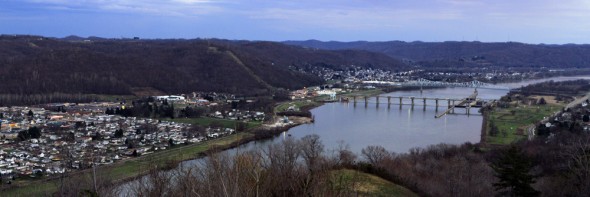
“There isn’t one big thing influencing the market here,” said Robert Kelter, a senior attorney in ELPC’s Columbus office. “There are a lot of factors. There’s been a change in administration in Ohio. The Legislature wants to change the renewable energy law. There are other setbacks that lead to delay and layoffs. It’s hurting the industry.”
For instance, when the chairman and founder of Xunlight, an important Ohio solar company, resigned in March, he left a skeletal staff and big debts. Willard and Kelsey, another of Ohio’s prominent solar manufacturing companies, laid off half its workforce in January. And back in Bedford Heights, Cardinal Fastener declared bankruptcy last June, laying off most of the staff before the company was bought by a German manufacturer in November.
Likewise, several wind energy installations have been brought to a standstill by local protests and faltering economic conditions. For instance, one project proposed by Buckeye Wind Energy for western Ohio and a second offshore project, planned in Lake Erie near Cleveland. Additionally, the trend can be seen in neighboring Michigan, where Unisolar, the state’s largest solar panel manufacturer, went out of business in February. Similarly, Evergreen Solar, which operated a solar cell manufacturing plant in Midland, Michigan, went bankrupt last summer. And despite signing several leases in two counties last year, Duke Energy recently abandoned a proposal for a 200-MW wind farm in northern Michigan, due to local unrest.
“The energy picture has changed dramatically,” said Eric Burkland, president of the Ohio Manufacturers’ Association. “The price of electrical power is low. The price of natural gas is low. It’s changed the thinking on all alternative technologies. It’s affecting solar. You could say it’s taking the wind out of wind.”
Wind & Sun Go Belly Up
The Midwest trend can be seen nationally, as well. U.S. investments in turbine farms and wind energy fell 38 percent last year to $US 9.7 billion, according to Bloomberg New Energy Finance. Venture capitalists invested only $US 177.6 million in wind startups in 2011, down 71 percent from the previous year.
“About five-six years ago, when we began promoting solar, I remember hearing from companies that worldwide demand for these products was so high that they couldn’t make products fast enough,” said Mike Shore, the chief spokesman for the Michigan Economic Development Corporation. “That all came to a grinding halt with the crash in 2008. Companies that we helped relocate here, like Evergreen, faded away or have dialed back their investments in new facilities.”
— Henry Jacoby
Mass. Institute of Technology
In the last six months, according to OSU economist Partridge, the renewables excitement has dimmed — not just in the United States, but also in countries considered friendlier to alternative energy. The Danish wind giant Vestas, for example, announced in January 2012 that it will cut 2,335 jobs, or 10 percent of its workforce, in an attempt to compete with Chinese suppliers. Another 1,600 American Vestas jobs are in danger, the company warned, if the tax credit supporting the wind industry expires.
Jon Goldstein, the chief spokesman of the American Wind Energy Association, the industry’s Washington, D.C.-based trade association, thinks that the outcome of the tax credit debate could shift the wind industry in either of two directions. The industry could grow to 100,000 jobs nationally in four years and reach 500,000 jobs by 2030, if the credit is renewed. Or it could lose half of its current jobs, if the production tax credit expires.
Long-Term Trajectory
The Midwest has not stopped generating power from new renewable energy installations, however. Iberdrola Renewables is getting ready to open a 304-MW wind farm in western Ohio, where EDP Renewables North America opened a 100-MW wind farm in October. A 50-MW solar installation is planned for southern Ohio, along with a manufacturing plant that wants to build solar panels in a new factory in Toledo.
The Solar Energy Industries Association reported this month that 1,855 MW of new photovoltaic capacity was installed in the U.S. last year, a figure that is more than double the 887 MW that were installed in 2010. Likewise, the American Wind Energy Association said that U.S. utilities installed 6,810 MW of wind capacity in 2011, a 31 percent increase from 2011.
Dougherty, of the Ohio Environmental Council, and other authorities note that some industrial sectors — particularly the utility industry — appear to be getting cleaner.
“Progress is being made,” said Skip Pruss, the former director of the Michigan Department of Energy, Labor, and Economic Growth who is now a clean energy consultant. “Construction of Michigan’s largest wind farm, 200 megawatts, has just been completed in Gratiot County, with support from all county and township governments.”
To meet Ohio’s ambition, a ballot initiative that would amend Michigan’s Constitution to require at least 25 percent of electricity be derived from renewable sources by 2025 is moving forward, Pruss told Circle of Blue.
“In the long term,” Pruss said, “the cost trajectories of renewable energy and fossil fuel-based energy are moving in opposite directions, and the economics of low-cost, fuelless energy systems will render carbon-based fuels obsolete.”
Natural Gas: “Bridge To Nowhere” or the New Face of “Clean” Energy?
Environmental advocates, including former Sierra Club director Carl Pope, used to subscribe to that mantra, describing natural gas as a reprieve of sorts, a “bridge to renewables.” In other words, the boom in gas production could buy America time, while the energy industry figured out ways to store, transport, and more efficiently generate clean energy from wind and solar.
Since 2000, the market share of gas for electricity generation has risen from 16 to 26 percent, while coal’s market share has declined from 52 to 42.5 percent, according to the Energy Information Administration. Horizontal drilling and fracking have made natural gas increasingly economical, and — when combined with the EPA’s March 27 proposal to limit climate-changing emissions from power plants — it is easy to see why, in February, GenOn Energy announced plans to deactivate seven coal-fired power plants totaling 3,140 megawatts (MW) of generating capacity. (Five of those plants are located in Pennsylvania, two are in Ohio, and one is in New Jersey.)
But Henry Jacoby, co-director of the Joint Program on the Science and Policy of Global Change at Massachusetts Institute of Technology (MIT), has questioned whether natural gas is actually a “bridge to nowhere” — a new national reckoning with the consequences to water, land, health, and the economy of perpetuating the fossil fuel economy.
“The fact that gas has become so cheap makes it hard for wind to compete, and it has hurt expectations that wind will be competitive in the future,” said Jacoby, who co-authored a report early this year by the MIT Energy Initiative called “The Future of Natural Gas.”
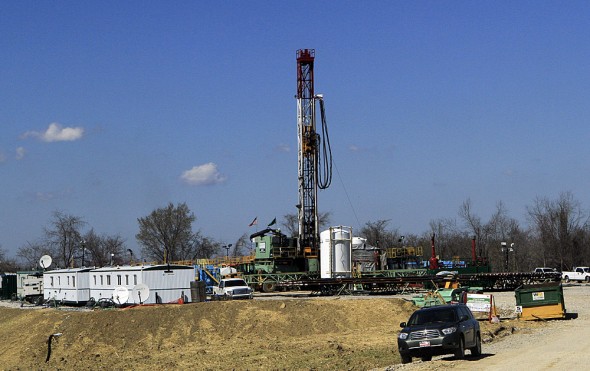
“We’re not killing renewables, but we’re stunting them,” Jacoby said in an interview with Circle of Blue. “The real growth in renewables needs to be supported by competitive local markets.”
“The argument we make,” he added, “is that we need to develop some technologies now that can command market shares when we have tighter controls over CO2 emissions. We need to continue investing in lowering the costs of renewables. Sure, natural gas is a bridge, but you don’t walk out on a bridge and forget that you have to build a landing on the other side.”
Fossil Fuel Jobs in Ohio: How Many?
OSU economist Partridge has doubts about how many new jobs the natural gas industry will actually create in Ohio. In “The Economic Value of Shale Natural Gas in Ohio,” a report that he co-authored this year, Partridge concluded that the Buckeye state could expect to gain about 20,000 jobs over the next four years from shale gas development — a far cry from the 200,000 jobs suggested by a Kleinhenz and Associates study that was prepared for the Ohio Oil and Gas Energy Education program.
“On the local level with shale energy development, there’s a sudden influx of money — from least payments, platform construction, that sort of thing,” Partridge said in an interview with Circle of Blue. “It’s a real gold-rush mentality. But what communities really want and need is long-term development. Typically, energy booms don’t provide that kind of sustainable growth. These communities need to be aware that there’s a boom and bust cycle, and they need to do what they can to plan for it.”
Partridge and research assistant Amanda Weinstein also co-authored “Making Green Jobs Work for Ohio,” which encourages the state to build on its manufacturing roots and to think strategically about its future energy investments.
“When Ohio, or any state, focuses on green jobs, they really should look at the state’s resources — not only natural resources, but its infrastructure and people,” said Weinstein, who recommended that Ohio shift its green energy programs away from playing “follow the leader” in developing wind and solar farms, areas where Ohio lags behind. Instead, she urges the state should focus on filling crucial gaps in the green energy economy, such as developing new storage and transmission technologies.
Jacob Wheeler reports for Circle of Blue from Minneapolis. Reach him at Jacob.Wheeler@TheUpTake.org. Heather Rousseau reports for Circle of Blue in Athens, Ohio. Reach her at circleofblue.org/contact.
Circle of Blue’s senior editor and chief correspondent based in Traverse City, Michigan. He has reported on the contest for energy, food, and water in the era of climate change from six continents. Contact
Keith Schneider

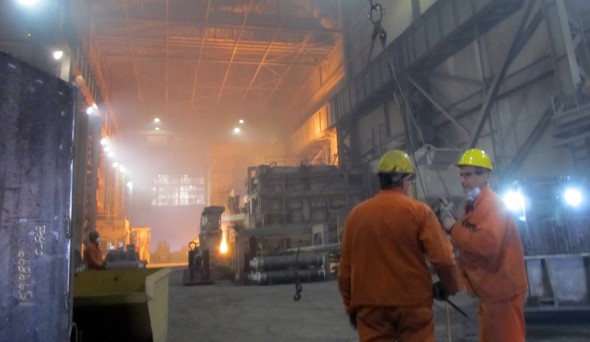

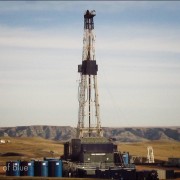



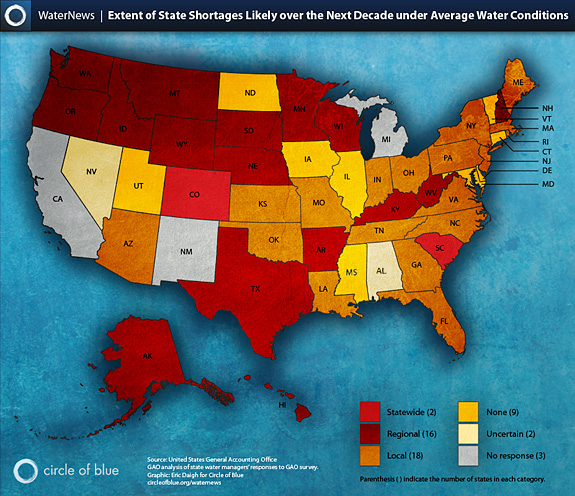


We never gave wind turbines offshore in Lake Erie a chance to know their effects — other than we know that it’s pollution-free and waste-free energy and will bring tens of thousands of jobs to the Cleveland area; jobs to waiting factories! Manufacturing, deliveries, building and maintaining wind turbines will help Cleveland’s economy!! Governor Strickland aproved them, as did Cleveland’s Mayor, and the EPA! A promise we all need in this economy!
No me parece sensato lo que has escrito. Me parece que de ningun modo te has
informado de manera correcta. De verdad opinas todo eso?
Hecha un ojo y ademas visita mi homepage; gta 5 trucos ps3